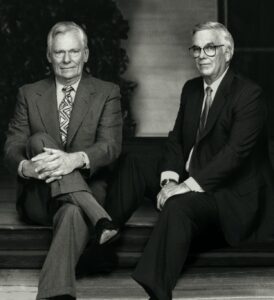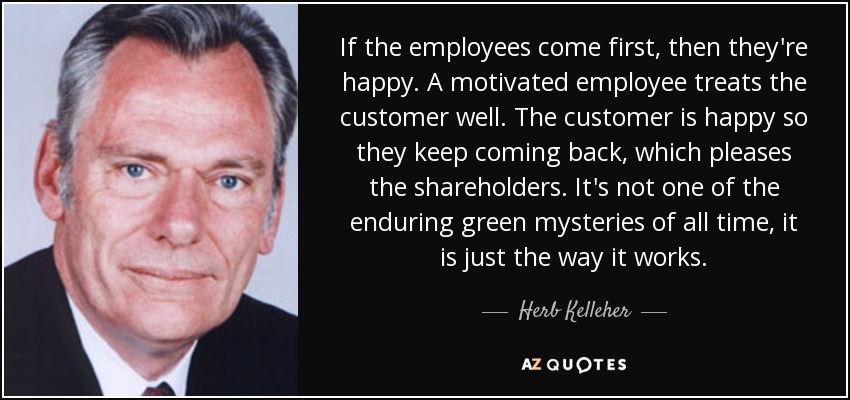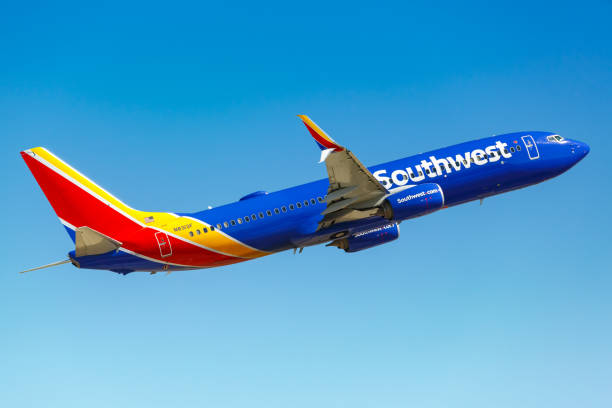Southwest Airlines is a premier American airline that has been revolutionizing the aviation industry for over five decades. With its roots deeply embedded in the spirit of entrepreneurship and innovation, Southwest has managed to defy the odds and establish itself as a household name. Founded in 1967 by visionaries Herb Kelleher and Rollin King, the airline started with a simple yet powerful mission: to provide affordable, accessible, and enjoyable air travel experiences for all.

From its humble beginnings, Southwest Airlines has grown to become one of the largest airlines in the world, boasting a fleet of over 815 aircraft and servicing more than 100 million passengers annually. But what sets Southwest apart from its competitors? What has enabled it to weather the storms of economic turbulence and emerge stronger than ever? The answer lies in its unwavering commitment to customer satisfaction, employee happiness, and sustainability.
In this article, we will delve deeper into the history of Southwest Airlines, exploring the key factors that have contributed to its remarkable success. We will examine the airline’s unique business model, its dedication to employee satisfaction, and its efforts towards environmental sustainability. We will also look at some of the challenges Southwest has faced over the years and how it has overcome them. Ultimately, we hope to provide readers with a comprehensive understanding of what makes Southwest Airlines tick and why it continues to thrive in an increasingly complex and competitive industry.
The Birth of Southwest Airlines:
Southwest Airlines was born in 1967, the brainchild of two ambitious entrepreneurs, Herb Kelleher and Rollin King. At the time, the aviation industry was dominated by large legacy carriers such as American Airlines, United, and Delta. These airlines focused primarily on serving affluent clients and offered limited routes, expensive ticket prices, and luxurious amenities. Kelleher and King saw an opportunity to disrupt this status quo by creating an airline that catered to the masses, offering affordable fares, streamlined services, and a personal touch.
The duo initially planned to launch their airline in California, but they soon realized that the state’s strict regulations and high operational costs made it difficult for a new carrier to gain traction. Instead, they turned their attention to Texas, where they identified a gap in the market for a low-cost, no-frills airline. On June 18, 1967, Southwest Airlines officially launched its first flight, connecting Dallas, Houston, and San Antonio.

A Novel Business Model:
Southwest’s founders knew that to succeed, they needed to differentiate themselves from existing carriers. They adopted a novel business model centered around the principles of efficiency, simplicity, and customer convenience. The airline eliminated unnecessary amenities such as meal service, first-class seating, and reserved seats. Instead, passengers were offered snacks and drinks, and seating was allocated on a first-come, first-served basis.
By stripping down its services to the bare essentials, Southwest was able to keep costs low and pass the savings on to its customers. This strategy not only attracted budget-conscious travelers but also forced the airline to operate efficiently, optimize resources, and minimize waste. The ‘low-cost carrier’ (LCC) model was born, and it revolutionized the aviation industry forever.
Emphasis on Employee Happiness:
Herb Kelleher, Southwest’s larger-than-life CEO, understood that his employees were the backbone of the company’s success. He fostered a culture of transparency, respect, and fun within the workplace, believing that happy employees equaled happy customers. Under his guidance, Southwest became famous for its irreverent humor, playful uniforms, and quirky inflight antics. Employees were empowered to make decisions, take risks, and put customers first – qualities that are still prevalent today.
Kelleher’s unconventional management style earned him a reputation as an unorthodox leader who valued his workers above all else. He famously said, “Employees come first. If our employees are happy, our customers will be happy, and if our customers are happy, shareholders will be happy.” This people-first philosophy has remained integral to Southwest’s DNA and has contributed significantly to its enduring success.

Focus on Sustainability:
As Southwest Airlines continued to grow and expand, it remained committed to its core values of customer satisfaction, employee happiness, and sustainability. In recent years, the airline has made significant strides in reducing its environmental impact while continuing to provide safe and reliable transportation to millions of passengers.
One of the ways Southwest has addressed sustainability concerns is by investing in fuel-efficient aircraft. The airline has replaced older planes with newer models that use less fuel and produce fewer emissions. Additionally, Southwest has implemented a number of initiatives aimed at reducing waste and conserving energy. For example, the airline has switched to using recycled materials for many of its in-flight products, such as cups and napkins.
Southwest has also taken steps to reduce its carbon footprint through the use of alternative fuels. In 2019, the airline announced a partnership with Red Rock Biofuels, a company that produces renewable jet fuel from wood waste. The agreement marked the first time a U.S. airline had committed to purchasing renewable jet fuel at scale.
Furthermore, Southwest has made a concerted effort to promote sustainability practices throughout its supply chain. The airline works closely with its suppliers to encourage them to adopt environmentally friendly policies and practices. For instance, Southwest has partnered with companies that specialize in recycling and reusing aircraft parts, reducing the amount of waste generated by the airline’s operations.
In recognition of its sustainability efforts, Southwest Airlines has received numerous awards and accolades. In 2019, the airline was named to the Dow Jones Sustainability Index, which recognizes companies that demonstrate excellence in environmental, social, and governance practices. Southwest has also been recognized by the Environmental Protection Agency (EPA) for its efforts to reduce greenhouse gas emissions.
Southwest Airlines’ success can be attributed to its unwavering commitment to customer satisfaction, employee happiness, and sustainability. By focusing on these key areas, the airline has built a loyal customer base, created a positive work environment for its employees, and demonstrated its responsibility to the environment. As the aviation industry continues to evolve, Southwest remains well-positioned to meet the challenges ahead, thanks to its strong foundation and forward-thinking approach.
Success Factors of Southwest Airlines
Southwest Airlines has been successful for a variety of reasons. Here are some of the key factors that have contributed to its success:
1. Low-Cost Strategy
Southwest Airlines’ sky-high success wasn’t fueled by fancy frills, but by smart, strategic frugality. Their low-cost magic starts with a single fleet: one plane type means simplified training and maintenance, a sweet deal for their bottom line. They skip the pricey hub-and-spoke system, flying point-to-point like efficient bees, buzzing directly between destinations. Fuel-sipping jets and shorter routes keep their carbon footprint and expenses light. Forget fancy airport hubs – Southwest embraces secondary airports, scoring lower landing fees and happier wallets.
This cost-conscious philosophy spills over to every corner. Quick turnarounds keep planes flying (and earning), while their focus on domestic routes avoids international complexities. Every resource is squeezed for maximum value, from staff schedules to in-flight snacks. The result? Unshakably low fares that sing to budget-conscious travelers, making Southwest the king of affordable skies. So, next time you see their cheerful smile painted on a plane, remember – it’s the grin of a cost-cutting champion, delivering happy travels at wallet-friendly prices.
2. Route Network
Southwest Airlines doesn’t just paint planes with cheerful colors, they paint the landscape with convenience thanks to their clever route network. Forget the maze of hub-and-spoke systems – Southwest zips directly between destinations, like a friendly neighborhood spider weaving a web of efficient connections. This point-to-point magic means less time navigating complex layovers and more time soaking up sunshine in your dream destination.
Their map boasts over 100 dots across the US, sprinkled with popular routes like Dallas to LA or Atlanta to Orlando. But they don’t stop there! Central America beckons with exotic locales like Costa Rica and Cuba, adding a dash of international flair to their domestic playground. Whether it’s a quick weekend getaway or a tropical adventure, Southwest’s network promises seamless, stress-free journeys that bring the world within reach. So, the next time you dream of new horizons, remember – Southwest’s friendly map might just hold the key to unlocking your next unforgettable adventure.
3. Fleet Management
Southwest Airlines’ fleet management includes the Technical Operation Fleet Reliability Group, which analyzes data from various sources to manage the overall health of the fleet. The group combines data from Flight Operations, Ground Operations, Inflight and Technical Operations with data from the on-board aircraft system.
Southwest Airlines’ fleet includes 815 aircraft, making it the fourth-largest commercial airline fleet in the world. All of the aircraft are from the Boeing 737 family of narrow-body airliners. The company’s fleet has an average age of approximately 12 years.
Southwest Airlines also uses PMA for its fleet. In 2022, the use of 341 PMA parts saved the airline $54 million.
4. Employee Relationships
Happy employees, happy flights – that’s the motto at Southwest Airlines. From the ground crew to the pilots, Southwest empowers its staff to own their decisions and prioritize both the company and customer needs. This trust fosters authentic connections, allowing employees to bring their unique skills and personalities to the table.
Respect flows both ways at Southwest. Just like the legendary hospitality extended to passengers, employees are treated with the same care and regard. Quality benefits like comprehensive 401(k) plans and industry-leading compensation packages show that Southwest genuinely values its workforce. The result? A dedicated and engaged team that contributes to Southwest’s consistent profitability and strong track record of employee satisfaction. With shared goals, open communication, and mutual respect, Southwest’s employee relationships are truly a recipe for success.
5. Leadership and Corporate Culture
Southwest Airlines soars high on a unique blend of leadership and corporate culture. Values aren’t just words on a wall, they’re embodied by executives like CEO Robert Jordan, who leads with a “Servant’s Heart”, putting employee well-being first. Kindness and respect aren’t reserved for customers; they permeate every interaction, guided by the Golden Rule.
This people-centric philosophy translates into a spirited, dynamic culture. Employees are encouraged to be their authentic selves, bringing their diverse perspectives and talents to the table. No wonder morale and motivation soar! This translates to satisfied employees who go the extra mile, ultimately wowing customers and keeping costs low. Southwest’s success isn’t just about savvy leadership; it’s about fostering a fun-loving atmosphere where everyone feels valued and empowered to contribute. That’s the true recipe for winning in the skies.
Some of Southwest Airlines’ senior executives include:
- Robert E. Jordan: President, CEO, and Director
- Mark Shaw: Executive Vice President and Chief Legal and Regulatory Officer
- Justin Jones: Executive Vice President of Operations
- Elizabeth A. Bryant: Senior Vice President and Chief People Officer
- Adam Decaire: Senior Vice President of Network Planning and Network Operations Control

6. Technology and Automation
Southwest Airlines’ success can’t be fully understood without looking at its embrace of technology and automation. While the “fun-loving” culture fuels employee engagement, smart tech choices power operational efficiency and adaptability.
Cloud adoption is key, with Southwest migrating critical systems to platforms like Amazon Web Services for scalability and cost savings. This allows them to respond quickly to changing travel demands, like adjusting pricing and scheduling in real-time.
AI plays a strategic role, too. From optimizing revenue management to targeting marketing campaigns and planning efficient flight routes, AI helps Southwest make data-driven decisions that keep them ahead of the curve.
But it’s not all high-level strategy. Even seemingly routine tasks benefit from automation. An advanced tool handles crew scheduling and reassignments with minimal manual intervention, saving time and ensuring smooth operations.
However, not every system is cutting-edge. The point-to-point flight model requires meticulous resource tracking, often relying on older systems with limited automation. This presents a challenge, as manually managing personnel and assets across numerous airports can be cumbersome.
Overall, Southwest’s tech scene is a blend of cutting-edge cloud solutions and legacy systems. While streamlining and modernization efforts are ongoing, the airline has clearly demonstrated the power of strategic technology in fueling its unique brand of fun-flying success.
7. Marketing and Branding
Southwest Airlines soars above the competition, not just with friendly skies, but with an irresistible blend of accessibility and heart-warming branding. Their marketing strategy revolves around making air travel approachable and enjoyable for everyone.
At the core lies Southwest’s unique voice. Forget stuffy corporate jargon – they speak human, fostering genuine connections with their customers. This is infused throughout their brand, embodied by the iconic go-go boots, spontaneous birthday serenades, and even humble peanut packets. It’s comfortable, casual, and undeniably lovable, earning them the nickname “the love airline.”

This charm translates into powerful digital marketing. On Facebook alone, they invested over $4.7 million in February 2020, engaging and captivating their audience. But the true secret sauce lies in their focus on high-quality service. Every interaction, from booking to touchdown, is designed to delight and build lasting loyalty.
Southwest’s success story isn’t just about low fares. It’s about crafting a distinct brand personality that resonates deeply with travelers. They’ve carved a niche where fun, approachability, and genuine human connection take center stage – and that’s a recipe for long-lasting brand love.
8. Financial Discipline
Southwest Airlines’ business model is based on low-cost pricing, efficient operations, and innovative logistics solutions. The airline also focuses on customer experience and looking ahead.
Southwest Airlines’ financial strength includes:
- Debt-to-equity ratio: 72.2%
- Total assets: $37.0B
- Total liabilities: $25.9B
- EBIT: $310.0M
- Interest coverage ratio: -1
Southwest Airlines’ financial leverage has been at a median of 3.3x from 2018 to 2022. In December 2020, it peaked at 3.9x.
Southwest Airlines’ revenue for the 12 months ending September 30, 2023 was $25.440B, a 12.11% increase year-over-year. For 2022, the airline’s revenue was $23.814B, a 50.82% increase from 2021.
Southwest Airlines also uses fuel hedging strategies to mitigate the risks associated with fuel price fluctuations. These strategies involve entering into contracts to secure future fuel purchases at predetermined prices.
These factors combined have contributed to Southwest Airlines’ success and positioned it as a dominant player in the US aviation market.
Also Read: The Southwest Airlines Story: Redefining Air Travel for the Masses
To read more content like this, subscribe to our newsletter



